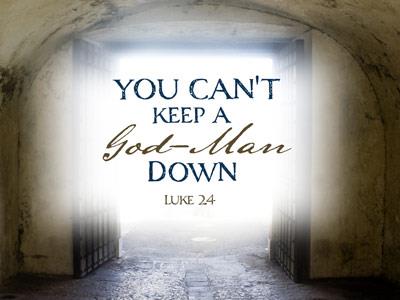-
A Life Transforming Encounter Series
Contributed by Pat Damiani on Aug 6, 2019 (message contributor)
Summary: To become a child of God I must cling to the living, resurrected Jesus
We’ll begin this morning with His very first encounter after the resurrection. We’ll find that account in chapter 20 of John’s gospel account. John is the 4th of four gospel accounts in our Bible and you’ll find it right after Matthew, Mark, and Luke and before you get to the book of Acts.
[Read John 20:1-10]
As I mentioned earlier in the sunrise service, each of the gospel accounts give us a slightly different perspective on the resurrection. So, as we should expect, there are some differences in those four accounts, but it’s pretty easy to piece them together and find that they don’t contradict each other at all.
John’s account focuses on Mary Magdalene. Unfortunately, our culture has painted a very unbiblical picture of Mary. The rock opera Jesus Christ Superstar casts her as Jesus’ lover and implies that she is a prostitute. And more recently the best seller, The DaVinci Code, claims that she and Jesus were married and had children.
What we know about her from the Bible is very limited. In Luke 8, she is identified as one of a group of women who provided financial resources for Jesus and His disciples. We also know from that account that Jesus had freed her from 7 demons, but it is not clear exactly how that bondage had manifest itself in her life.
It’s instructive to note that the very first person that Jesus appears to after His resurrection is not who we would expect. He didn’t appear to the Jewish religious leaders or to the Roman officials or even to the apostles. Instead He appears to a very ordinary woman with a checkered past. That ought to be a tremendous encouragement to all of us. If Jesus chose this insignificant, formerly demon-possessed woman to be the first witness of His resurrection means that there is hope for every one of us, no matter what our past might look like.
Although John primary focuses on Mary, we know from the other gospel accounts that she came to the tomb early that Sunday morning with a group of other women. When she arrives at the tomb and notices the stone has been rolled away she runs back to tell Peter and John that somebody had stolen Jesus’ body, which was the only explanation that made sense to her at that point. So John and Peter head for the tomb. John, being younger, is able to outrun Peter and gets there first. He looks in and sees the grave clothes lying there, but he doesn’t enter. Peter finally arrives and, not surprisingly, he just barges into the tomb where he also sees the burial cloths lying there.
Many of you may be familiar with a story that has been making its way around the internet for over a decade now that claims that the fact that the face cloth was folded up is consistent with a Jewish tradition in which a folded napkin meant that someone was going to return to the table. There are a number of problems with that story. Most importantly, no one can cite any source for such a tradition in Jewish culture. In fact, it’s highly unlikely that the Jews even used the kind of napkins we think of in that culture. And as the ESV correctly translates the underlying Greek word, what John and Peter see is not a napkin anyway, but rather a “face cloth” that would have been used to wrap Jesus’ head.

 Sermon Central
Sermon Central



